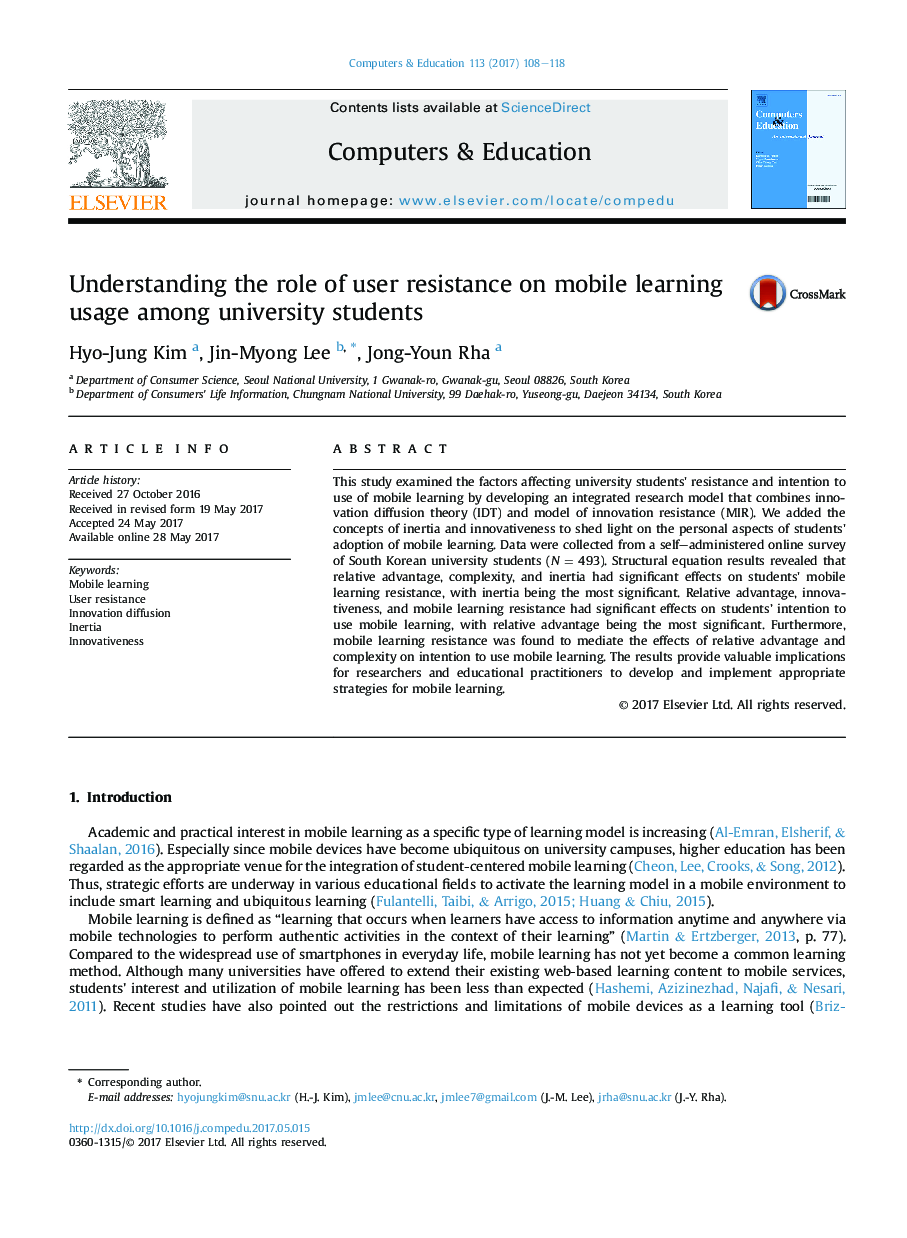| Article ID | Journal | Published Year | Pages | File Type |
|---|---|---|---|---|
| 4936749 | Computers & Education | 2017 | 11 Pages |
Abstract
This study examined the factors affecting university students' resistance and intention to use of mobile learning by developing an integrated research model that combines innovation diffusion theory (IDT) and model of innovation resistance (MIR). We added the concepts of inertia and innovativeness to shed light on the personal aspects of students' adoption of mobile learning. Data were collected from a self-administered online survey of South Korean university students (NÂ =Â 493). Structural equation results revealed that relative advantage, complexity, and inertia had significant effects on students' mobile learning resistance, with inertia being the most significant. Relative advantage, innovativeness, and mobile learning resistance had significant effects on students' intention to use mobile learning, with relative advantage being the most significant. Furthermore, mobile learning resistance was found to mediate the effects of relative advantage and complexity on intention to use mobile learning. The results provide valuable implications for researchers and educational practitioners to develop and implement appropriate strategies for mobile learning.
Related Topics
Social Sciences and Humanities
Social Sciences
Education
Authors
Hyo-Jung Kim, Jin-Myong Lee, Jong-Youn Rha,
